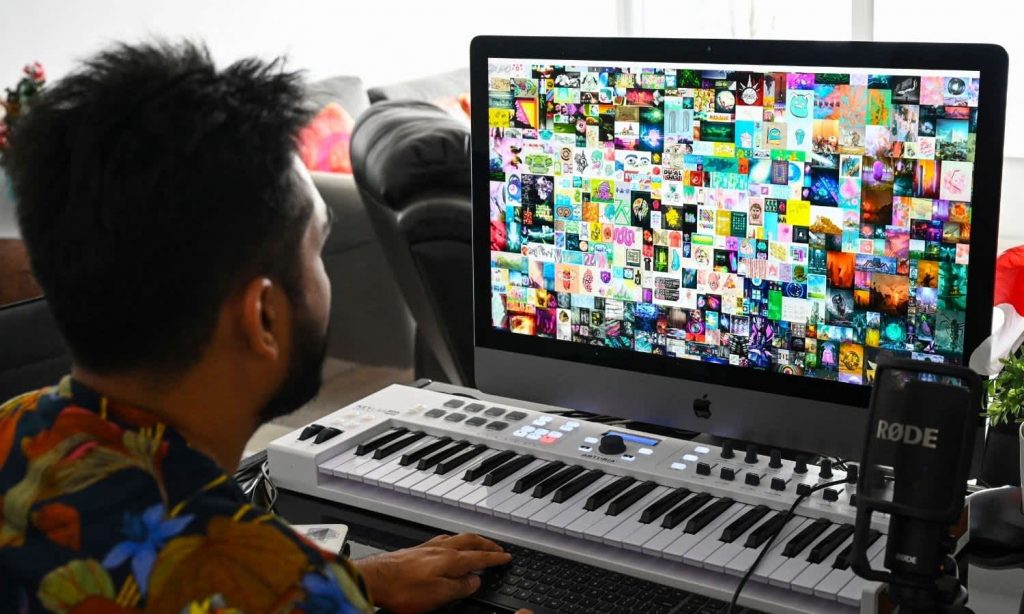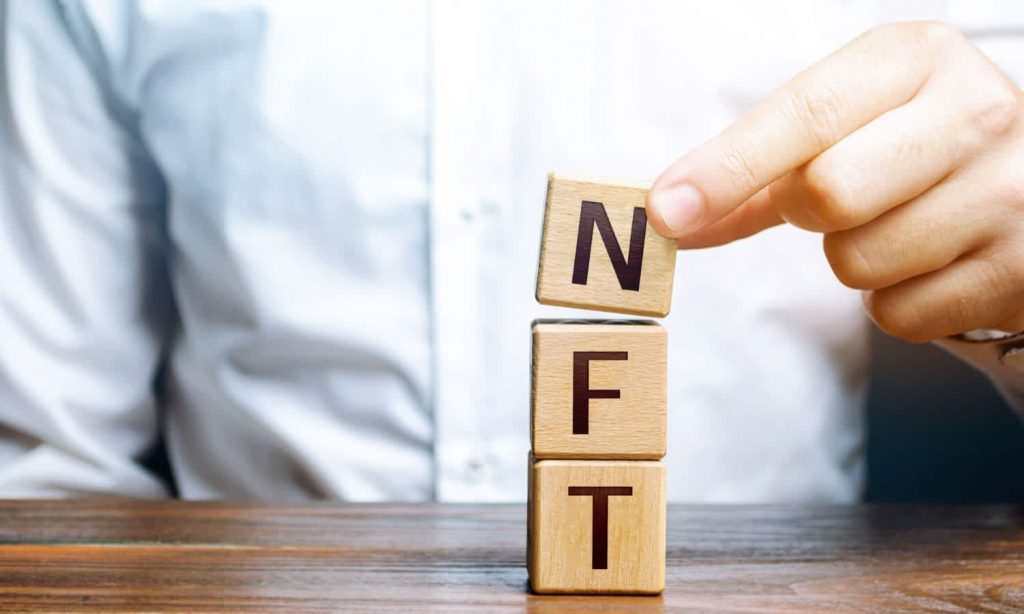NFT’s or Non-Fungible Tokens, are the hottest topic in pop culture since everyone disagreed on what colour that dress was.
Just recently, we ran an article about the fact that the infamous Fyre Festival cheese sandwich Tweet was available to purchase as an NFT through Ja Rule’s own trading platform, Flipkick.
A little before that, we reported on this house on Mars which sold for AU $655,000 despite not physically existing.
Now, yet another pop culture icon has profited from the NFT market — namely Zoë Roth, who you might better know as “Disaster Girl”, thanks to the series of memes she appeared in after a photo of her as a five-year-old went viral.
Roth became the (literal) poster child for taking pleasure in the misfortune of others after a photo of her standing in front of a burning house — cheeky smile across her face — captured the interest of the internet. Today, that interest can be quantified as half a million dollars, or around AUD$ $643,000, in NFT form.
“Disaster Girl,” perhaps one of the most recognizable members of the unofficial meme hall of fame, is now an NFT worth half a million dollars. The 4-year-old girl from the photo, now a college student, plans to pay off student loans and donate to charity. https://t.co/cmJrm3qMbA
— The New York Times (@nytimes) April 29, 2021
For the record, Roth did not start the fire in the photo, it was actually a controlled blaze set by firefighters and kids from the North Carolina neighbourhood were allowed to take turns holding the hose. Roth’s father snapped the picture of her in front of the flames, entered it into a photo competition a few years later and meme history was made.
Roth will use her small fortune to pay off her student loans and to make a donation to charity. The Roths also retained the copyright and will receive 10% of all future sales of the NFT.
In an interview with The New York Times, which broke the news of Roth’s sale, the now 21-year-old said, “People who are in memes and go viral is one thing, but just the way the internet has held on to my picture and kept it viral, kept it relevant, is so crazy to me. I’m super grateful for the entire experience.”
Well, That’s Great, But I Still Don’t Get It?
If you’re still a little fuzzy on what exactly an NFT is, and why they are so valuable, you’re not alone.
According to Forbes: “An NFT is an entry on a blockchain, the same decentralised digital ledger technology that underlies cryptocurrencies like bitcoin. But unlike most bitcoin–which is fungible, meaning that one coin is essentially indistinguishable from another and equivalent in value–tokens on these blockchains are non-fungible. That means they are unique, so they can represent one-of-a-kind things.”
Or, more simply, an NFT is the digital certificate of authenticity that proves that a certain “thing” — be it a Tweet, meme or digital artwork — is the original version and assigns value to that same thing. You can see why this is handy in the digital age when images are replicated endlessly, like in the case of the “Disaster Girl” memes.
By entering each digital asset onto a blockchain, a record can be kept of who owned or authored the original so that each time the asset is sold on, they can continue to make a profit — something that doesn’t exist yet in the physical art world where if you sell your painting to someone for $5000 and, a year later, they on-sell it for 10,000, you still only made $5000 from the original sale.
The “non-fungible” part basically refers to the fact that, because each “thing” is unique, it cannot be interchanged with something else. So while you could give someone a $10 note in exchange for two $5 ones, you can’t trade one NFT for another because they will not be considered equal in value and therefore, not interchangeable.

What Are People Buying?
While art is certainly a hot commodity on the NFT market (just ask Beeple, who recently sold his artwork “Everydays: The First 5,000 Days” for USD $69.3 million) other “things” reach eye-popping prices also, such as the first Tweet ever posted by Twitter CEO Jack Dorsey which sold for USD $2.9 million and a New York Times column explaining NFTs which sold for around $725,000.
Kings of Leon have also gotten into the game with their eighth studio album, When You See Yourself, becoming the first major rock album to be released as an NFT, albeit at the more reasonable price of $50 a pop. As NME put it, “For the artists, NFTs bypass streaming and traditional download markets and put the money straight into the bands’ pockets, which is a major draw at a time when large gigs still seem a way off and streaming services pay worse than a week’s work experience at Amazon.”
So, does this mean that you can parse through your Twitter timeline and offer up an old post complaining about your daily commute in exchange for cash? The short answer is no, I’m afraid.
As with anything, the value of something is dictated by the laws of demand. Discerning buyers choose NFT’s to buy based on how they perceive the “thing” might increase in value over time. The first-ever Tweet posted by Jack Dorsey bears obvious cultural and monetary value, your 8am bus selfie, sadly, most likely does not.
How Can I Get In On the NFT Game?
It’s worth noting, also, that you can’t just slap down a fiver and become the proud owner of a new digital artwork, sneakers, song or meme. NFT’s can only be purchased using cryptocurrency — typically ethereum, which is the second-largest type of crypto after bitcoin. Buying etheruem is simple enough to do online through platforms such as Coinbase and seems to have remained fairly stable (but is still prone to fluctuation, naturally.)
More Importantly, Why Do I Want to Get Into the NFT Game?
So now we’ve covered what NFT’s are and how to purchase them, you might still be puzzled as to why people are investing such big bucks into things that are not necessarily tangible. After all, what good is owning a one-of-a-kind artwork if you can’t hang it on your wall to enjoy every day?
The complicated answer to that varies from person to person and can have a lot to do with status or the desire to have a connection to something unique.
The simple answer is that it can prove to be lucrative if the thing you purchase is perceived as having value by other people. However, as Forbes warns, “Keep in mind, an NFT’s value is based entirely on what someone else is willing to pay for it.
“Therefore, demand will drive the price rather than fundamental, technical or economic indicators, which typically influence stock prices and at least generally form the basis for investor demand. All this means, an NFT may resale for less than you paid for it. Or you may not be able to resell it at all if no one wants it.”
Read more stories from The Latch and subscribe to our email newsletter.








